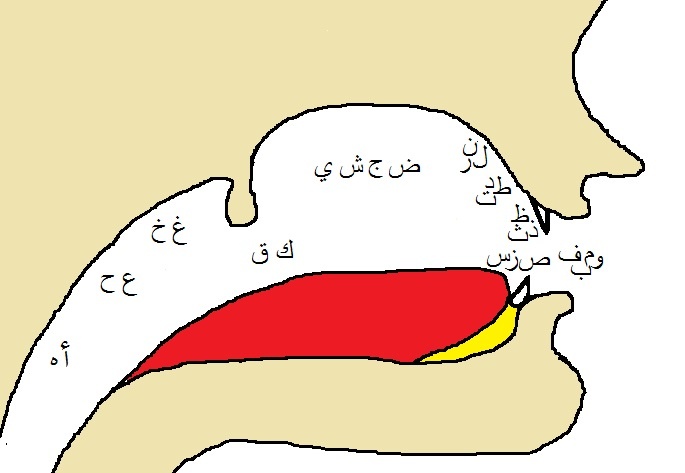Noorani Qaida is a religious booklet whose aim is to help kids learn and master Quranic Arabic and its tajweed. Noorani Qaida was written by Sheikh Noor Muhammad Haqqani from India. In the latest version, each letter in Noorani Qaida has different colors according to variable sound pitches, making it one of the best resources to learn accurate Arabic pronunciation and ultimately the Quranic tajweed rules.
Although Noorani Qaida uses mostly Urdu as explanation, its English version is equally good for native Arabic and non-Arabic speakers. Traditionally, kids start learning with Noorani Qaida from the age of 4 years. One can benefit from it without having any prior knowledge. The Noorani Qaida booklet also teaches you the articulation point of Arabic letters. Rehmani Qaida and Qurani Qaida are best alternatives to Noorani Qaida.
Table of Contents
Significance Of Learning Noorani Qaida
Noorani Qaida establishes the foundation to read the Quran. Some of the key outputs which make Noorani Qaida significant are as follows;
- Introduction to all Arabic alphabets
- Understanding how an Arabic word is made up by different letters
- Understand where to stop during Quranic recitation and where to prolong
- Recognize and pronounce each Arabic letters precisely based on its Makhraj. Learn more about Makharij.
- Good set of excercises
Chapters Of Noorani Qaida
The sequence of teaching the Noorani Qaida starts with teaching the following:
- Singular Letters
- Consonants – Combined letters
- Huruf Al-Muqata’at
- Letter Movement
- Nunnation
- Letter movement and Nunnation (Combined)
- Standing Movements
- Quiescency
- Vowels and duplication
Noorani Qaida gradually develops the reading skill in a unique and effective manner from building blocks to complex sentences. As a result the student masters the correct pronunciation of Quranic words in just a few months. Noorani Qiada has also organized chapters from easy to tough with lots of practicing exercises. For a student to master the tajweed concepts, it is critical to grasp a chapter properly prior moving to the next chapter, saving valuable time as well as the tutor’s effort.
In Noorani Qaida, the word used for each major section is ‘Takhti‘. It is synonym to the word ‘Wooden Tablet’. In old times, kids used write on ‘Takhti’ with a bamboo pen and master the letters. You may think of this ‘Takhti’ as Chapters.
Chapter (Takhti) No. 1: Single Arabic Letters (Huroof/Mufridat)

First chapter includes all Arabic alphabets supported by explanatory words. Explanatory words help to pronounce each letter. For example the starting word is “أ” whose explanatory word is “alif”. Similarly the letter “ب” is read as “Ba“ This guides kids how to pronounce each letter correctly. The best way to master first chapter of Noorani Qaida is to read the letters by observing the followings;
- How many dots are there in a letter?
- Are dots above a letter or below?
- Associate the Arabic letter with your native-language words
Chapter (Takhti) No. 2: Compound Letters (Murakkabat)

Chapter two comprises the compound / combination of two separate letters from chapter one.
For example the word “لا” is a combination of two separate letters “ل” and “ا”. Efficiently learn this chapter by keeping the following in your mind;
- How many letters in a compound letter and identify each?
- Which letter is on the right and which is on the left?
- What if we add a dot above a letter instead of below? Or vice versa
Chapter (Takhti) No. 3: Mysterious Letters (Muqatta'at)

Third chapter includes the mysterious letters of the Quran. Main goal of including these disjointing letters is to learn the perceptual flexibility. Comparatively this chapter is easy. The best way to master this chapter is to Note;
- If a word is having Standing Fatha it should prolonged 1 second at least
- If a word is having Maddah then it would be prolonged 2 seconds
Chapter (Takhti) No. 4: Discussion about Movement (Harakaat)

Fourth chapter comprises “Letters Movements” also known as “Harkaat”. There are three kinds of movements;
- Fatha (a small line placed above a letter)
- Kasra (a small line placed below a letter)
- Dammaha (small curl-shaped sign placed above a letter)
These three are short vowels in the Arabic language.
Chapter (Takhti) No. 5: Nunnation (Tanween)

Fifth chapter teaches the students double Fatha, Double Kasra, and Double Dummah. Which is also known as “Nunation” or “Tanween”. Object of this chapter is to accurately learn the prolonged pronunciation of letters.
- Practice to pronounce the word with Ikhfaa (by hiding the sound in the nose)
- Practice to pronounce without Ikhfaa
Chapter (Takhti) No. 6: Exercise of Movement and Nunnation

Sixth chapter of Noorani Qaida combines letters of chapter 4 and 5. Combinedly it provides an opportunity for kids to exercise Movements and Nunation.
Chapter (Takhti) No. 7: Standing Movements

Seventh chapter lets kids learn the “standing fatha”, “standing kasra”, and “standing dammaha”. These signs are used with letters to pronounce prolong.
- Do not perform ikhfa on maddah letters come after “Noon” or “Meem”
- Pronounce letters without standing kasra to know where to prolong and where not
Chapter (Takhti) No. 8: Letters with Long Vowel Sign and Soft Letters (Huroof Maddah o Leen)

In the eighth chapter kids will learn about “Haroof Maddah o Leen”. These are soft letters which need to prolong equally to one “Alif” OR one or two seconds.
- Practice not to prolong as in the case of maddah
- Practice not to pronounce shorter than one second
- Pronounced with soft tongue
Chapter (Takhti) No. 9: Exercise of Movement and Nunnation - Madda’ah o Leen

Ninth chapter is a combination of chapters 6,7 and 8. A collective exercise of Movements, Fatha, Karsa, Dummah, Maddah and Tanween letters. This exercise builds a strong grip to understand the difficult words to pronounce. Note;
- If there is hamdha after maddah then it will prolong equal to four alifs
- If there is a silent word after maddah then it will prolonged equal to 5 alifs
Chapter (Takhti) No. 10: Quiescence (Jazm)

In the tenth chapter kids will learn about
- Sakoon – quietness
- Jazm – stillness)
- Haroof e Qalqalah
Practice asking the following questions in mind;
- What is Jazm? – Half curly line
- What is a letter called with Jazm? – Sakin/Silent
- How many times does a Jazm letter is pronounced? – Only one time along with previous letter
Chapter (Takhti) No. 11: Exercise for Quiescence (Jazm)

This chapter is a revision of previous chapter 9 and 10. Here students will exercise the “Sakoon” and “Jazm” along with Movements, Fatha, Karsa, Dummah, Maddah o leen, and Tanween letters . Practice asking these question in mind;
- When Ikhfaa is done in the case of noon saakinah and Tanween and when there is no haroof e halqi (6 throat’s letter) after them?
- When will the letter “Raa ” be pronounced bold? – when the stop is necessary OR have any silent letter before
Chapter (Takhti) No. 12: Sign of Duplication (Tashdeed)

In this chapter, students learn the “Tashdeed” sign ( ّ duplication sign) – represented as a small w shaped sign used as double consonant. Tashdeed is pronouncing the letter two times by connecting the previous letter. Mushadid (letters with tashdeed) pronounced in a strong voice.
- What is tashdeed/Shaddah?
- What does a letter of tashdeed called?
- How many times letters with shaddah/tashdeed are pronounced?
Chapter 13: Exercise for Duplication (Tashdeed)

Advance level of chapter 12. You have to practice “Tashdeed” with some difficult and complicated words.
Chapter 14: Exercise for Duplication and Quiescence (Tashdeed o Sukoon)

This chapter is a revision as well as a test of what previously learned from Tashdeed, Sakoon, and Jazm. Kids will learn “Tashdeed with Sakoon” by practicing pronouncing the common Quranic words.
Chapter 15: Exercise of Double Duplications in a Single Word

This chapter introduces the advanced level of “Tashdeed”. That is “Tashdeed with Tashdeed” (2 duplication signs). Chapter progress with more complex and difficult quranic words.
Chapter 16: Revision of Duplication After long Vowel

Same as 15. Revision of previous chapter with long vowel.
Final Words - From where to Learn Noorani Qaida?
Learning Noorani Qaida is simple and easy if you have the will to learn and focus on the ultimate goal; able to read Quran correctly. In our opinion, learning via a skilled tutor or Academy is a lot better than learning alone. This is because:
- You are getting your kid to learn a new language so it won’t be that easy learning alone
- It is hard to pronounce Arabic letters for beginners and a tutor can identify & correct Makharij mistakes sooner
- With tutor you will take classes regularly and regularity is the key for quality learning.
If you can’t manage a tutor then as a worst option you may opt for Noorani Qaida mobile application. This will help you learn but it won’t produce the quality results as with a live tutor in front of your kids.
Till then – enjoy reading Noorani Qaida!
FAQ
Yes, adults can benefit from learning with the Noorani Qaida as it provides a structured approach to mastering Arabic pronunciation and Quranic recitation rules, regardless of age.
Yes, alternative resources similar to the Noorani Qaida include the Rehmani Qaida and Qurani Qaida, which also focus on teaching Arabic letters and Quranic recitation rules.
The time it takes to complete the Noorani Qaida varies depending on individual learning speed and consistency. However, with regular practice, students can master the fundamentals of Arabic pronunciation and Quranic recitation within a few months. Check out our blog How long it takes to complete reading Quran
Yes, the Noorani Qaida can be used for self-study, but seeking guidance from a skilled tutor or academy is recommended for better understanding and correction of pronunciation mistakes.



